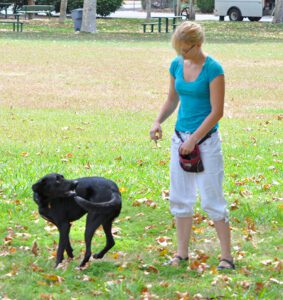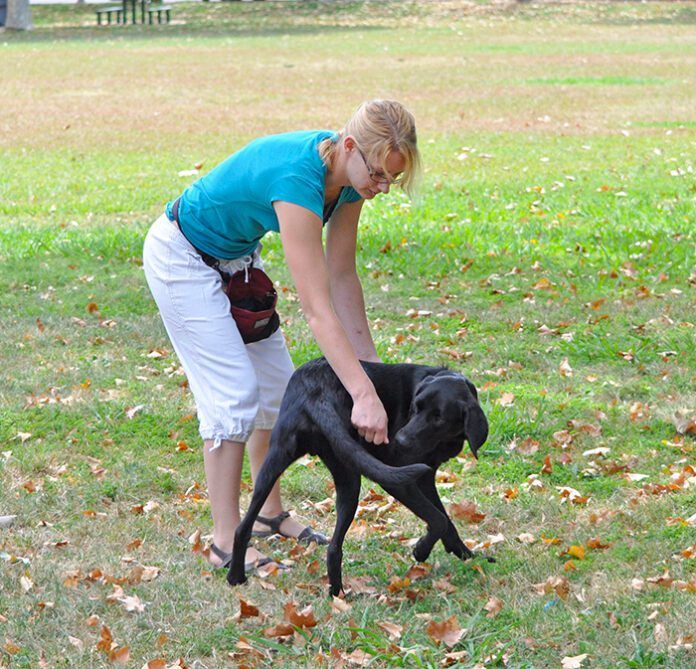There are long lists of fantastic fun tricks you can teach your dog – and “Spin” is one of my all-time favorites. “Spin” simply asks your dog to turn in a 360-degree circle – easy-peasey to teach, and fun to show off!
- To start, ask your dog to stand in front of you, facing you. If she keeps sitting, back up and invite her to move forward toward you as you begin to lure the spin.
- Have a treat in your right hand and put it at the end of her nose. Lure her to your right (her left) by moving the treat in an arc toward her tail.
- Move the treat in a 45- to 90-degree arc. If she follows the lure, moving her feet in the beginning of a spin, mark (using the “click” of a clicker or a verbal marker, such as the word “Yes!”) and give her a treat. If your dog follows the lure easily, go the full 90 degrees. If she’s a little hesitant, start with 45 degrees (or less!).
- Gradually increase the arc, marking and treating generously, until she’s doing a full 360-degree turn with a mark and treat at the end.
Add the “Spin” Cue

When your dog does the full circle easily every time, add your cue. I use “Spin” for a right turn (counterclockwise), and “Twirl” for a left turn (clockwise). Be consistent! Of course, you can use whatever cues you want. I also like “Twist” and “Shout,” and “Donut” and “Cheerio.” Start saying your cue just before you lure her. Gradually minimize the hand motion and eventually fade the lure completely, until she’ll spin on just the verbal cue or with a tiny hand or finger signal. (For information on how to fade the use of a food lure, click here.) For “Twirl,” do the same thing – only start with the treat in your left hand and turn her the opposite direction.
Now go show off to your friends and family!






